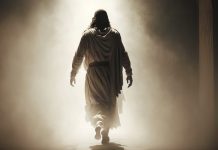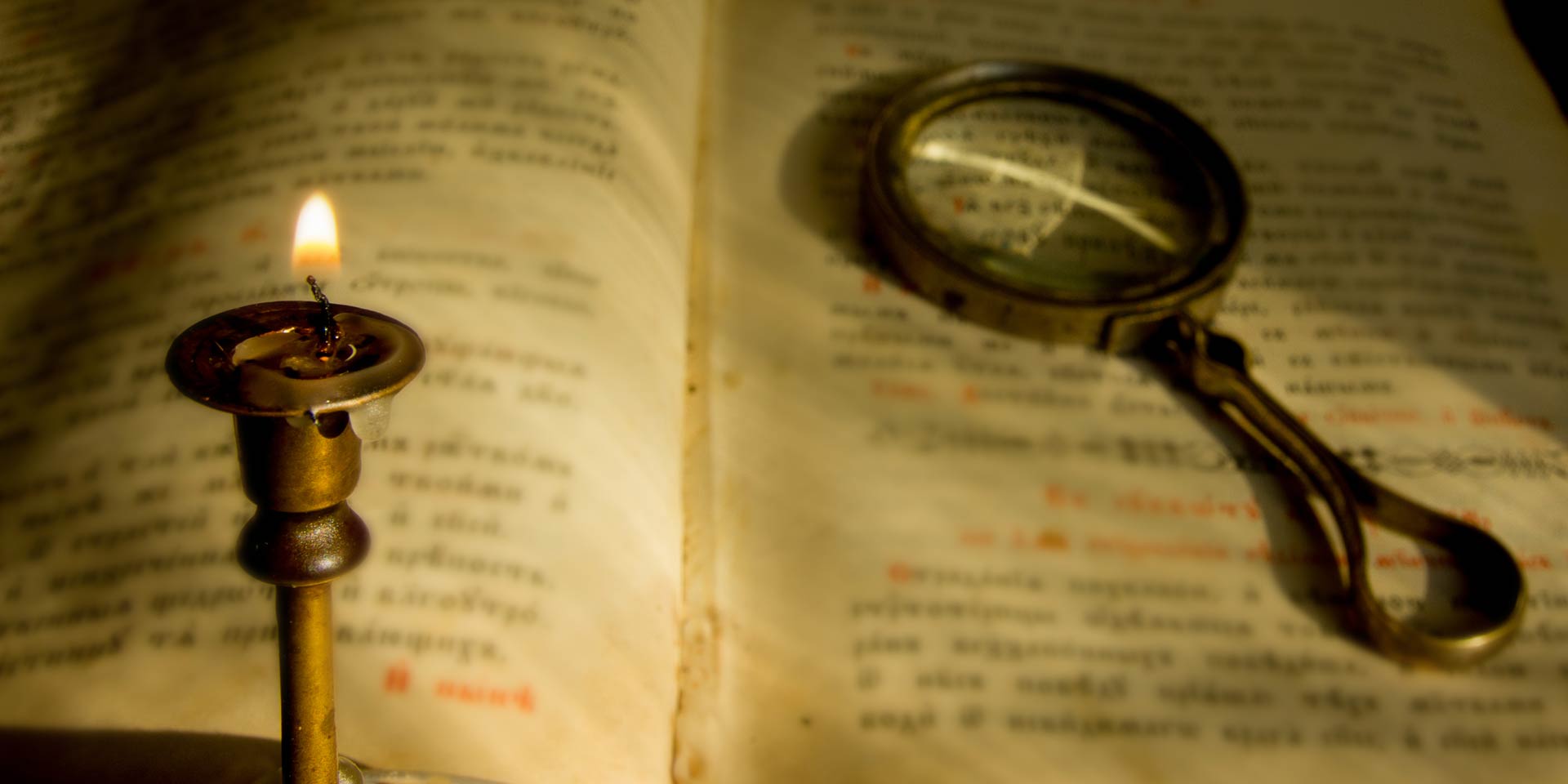While the historic churches remained at least disinterested in millenarianism, the Apocalypse, and the Parousia—that is to say, when they were not hostile to them—Protestant pluralism allowed for both reluctance[1] and increasingly significant preoccupations with the research and publication of the themes regarding the end of the world.
The more radical and persecuted evangelical movements found comfort in the prophetic themes of Daniel and Revelation, while some movements interpreted these books in the most political, revolutionary, and military way possible, trying to establish the kingdom of justice on earth using “unconventional” weapons.
In the Western Protestant environment, the millenarian interest increasingly captivated an army of theologians, clerics, and laymen, who wrote and preached on apocalyptic themes, in a historicist manner. This field of study became the preoccupation of many personalities of the modern world, such as high-ranking people in British society, and even scientific geniuses such as the mathematician John Napier (1617), poly-scientist Isaac Newton (1727), mathematician and historian William Whiston (1752), as well as many others. These concerns became, after the 1800s, the largest interconfessional millenarian and revivalist movement, which influenced the Christian world more than we might suspect.
Historical figures in search of the exact date of the end of the world
Unlike many historic millenarians, those of the 19th century were especially concerned with discovering the time of the end as accurately as possible, for missionary purposes. Therefore, they focused on the apocalyptic chronology of Daniel 8 and 9, interpreting these prophecies in the classical Protestant code. This code of interpretation of the apocalyptic chronology had old medieval Christian and Jewish roots, which originated in the biblical tradition: one apocalyptic day symbolises one historical year (cf. Numbers 14:34; Ezra 4:6). Even in the East, this key idea was well known.[2]
This application of prophecy has its roots in the Middle Ages. Around the 1300s, Franciscan theologians Peter John Olivi and Ubertino of Casale, leaders and preachers of the Spiritual Franciscans, began to count the 2,300 days of Daniel 8 as years (from Antiochus Epiphanes until after the year 2000). The great Portuguese rabbi, royal financial adviser and philosopher Don Isaac ben Judah Abarbanel (1500) counted them from “the beginning of the Jewish exile under Rome” to “distant days.”
Read part II here: The Second Coming Files: a 2000-Year Inquiry | Part II: Millenarianism as a forgotten orthodoxy
The first scholars to establish the beginning of the 2,300 “days” of Daniel 8:14 as years, counting from the Persian period to the end, were the famous Spanish physician Arnaldus de Villa Nova (1292), also a philosopher, astrologer, and alchemist; Cardinal Nicolaus Cusanus (1452), mathematician, astronomer, theologian, jurist, and diplomat who influenced the thinking of some later scholars; and the British theologian John Tillinghast (1650), one of the founders of the Independents. Their calculation predicted the coming of Christ before the 1800s. The British Unitarian scholar Joseph Priestley adopted the same stance in 1803.
Around 1792, a Bible published by Presbyterians in America counted the 2,300 years starting with the rise of Alexander the Great and predicted the fulfilment of the prophecy in the year 1966. A series of theologians, authors, and preachers from the 18th-19th centuries continued to establish the beginning of the 2,300 years according to various criteria, reaching equally diverse results.
The enthusiasm for biblical prophecy interpretations in the 18th-19th centuries
In 1756, the illustrious pietist biblical philologist Johann Albrecht Bengel from Württemberg, Germany, doctor of theology from the University of Tübinger (1751), published “Ordo Temporum,” a treatise on the chronology of Scripture, and an exposition of the Apocalypse, which became very popular in Germany and was translated into several languages. Among his various attempts to historically identify the chrono-apocalyptic passages, the year 1836 (June 18) was expected to be the end of “time and times and half a time of the woman,” when “the destruction of the beast” would occur.[3]
Bengel was followed in his conclusions by his disciples Crusius, Rothe, Volch, Thiersch, Lange, and other Protestants from Württemberg who emigrated to the Holy Land to be closer to Christ when He was to come, forming the Temple Communities. Similar movements took place in America as well, as the millenarian trend naturally evolved towards futuristic-Zionist perspectives.
Other theologians who calculated that the end of the 2,300 years would occur on dates that deviated far from the 19th-century standard were:
- James Purves (1777), whose calculations returned the year 1766;
- Irishmen Hans Wood (1787) and William Hales (1803), who predicted the cleansing of the Church to occur in 1880;
- British Thomas Scott (1792), who did not indicate a precise year, but stated that the event was not very distant;
- Englishmen James Bicheno (1793) and Jonathan Bayford (1820), as well as the Americans Benjamin Farnham (1800) and Ethan Smith (1811), who argued that the period would end with the fall of the Turks and the liberation (“cleansing”) of the Holy Land in 1819;
- British William Girdlestone (1820), who predicted the end of Mohammedanism would be in 1965;
- American John Bacon (1799) and the British Adam Clarke (1810), who predicted the return of the Jews would occur in 1966;
- Frenchman Jean de la Fléchère (1800), who indicated the year 1750;
- Englishman Edward King (1808), who indicated the year 1762;
- Americans Eliphalet Noth (1804) and John King (1808), who expected the cleansing of the Church in 1867;
- American G. Junkin (1836), who expected the same event a year earlier, in 1866;
- The American A. L. Crandall (1841), who predicted the beginning of a spiritual millennium in 1868;
- Englishman Lewis Way (1818?), who predicted the fall of Islam and the restoration of the Jews in 1866;
- P. Bolton (1819), who expected the same event two years later, in 1868;
- British admiral S. R. Maitland (1814), who believed that the period had ended with the cleansing of the temple by the French Revolution;
- Englishman Alexander Keith (1832), the American Isaac Hinton (1842), the Scottish Jonathan Cumming (1843) and the British Edward B. Elliott (1844), who argued that the period had already ended with the disintegration of Islam and the liberation of Jerusalem from the Turks in 1820 (!);
- British William Holmes (1836), who calculated the end of the period in 1836.
Sir Isaac Newton (1704), the first true scientist or, according to others, the “last magician”—officially a devout Anglican, but secretly quite the “heretic” (as described below)—counted the 2,300 years from the Roman conquest of Macedonia to the year 2132, or from the fall of Jerusalem (AD 70) until the year 2370. Both possible dates indicated, in his interpretation, the Jewish restitution of Jerusalem. He estimated that the end of the world would come “no earlier than 2060,” which would be the end of the 1,260 “days” of Revelation.
Newton, however, did not expect a catastrophic end of this world, but a happy millennial age, and he disliked the impatient biblical scholars who made more alarming calculations. “This I mention,” writes Newton, “not to assert when the time of the end shall be, but to put a stop to the rash conjectures of fanciful men who are frequently predicting the time of the end, and by doing so bring the sacred prophecies into discredit as often as their predictions fail.”[4] The possible dates speculated by Newton were distant enough so as not to jeopardise the credit given to the great scientist, and even today, the majority and phlegmatic pseudo-Christianity is not bothered by these dates. Despite his cautious attitude, the scholar greatly influenced the millenarian explosion through the sincerity of his faith in God and the Bible, his classic Protestant anti-papism, and his apocalyptic studies, which were published posthumously.[5]
The theology of Isaac Newton
Newton was a sincere believer in God and the Bible. He was passionate about biblical theology, in a way that reflected both scientific acuity and a disposition to search for the hidden, codified meaning. His theology was certainly Unitarian (Arian), denying the traditional dogmas regarding the Trinity, the immortality of the soul, and the existence of demons. However, for practical reasons, he did not make these opinions known during his lifetime, in order not to scandalise the state church, which could have caused him to lose his status and his property and even lead to his death. Newton was also concerned with pseudoscientific phenomena, which today are classified as the “occult,” such as alchemy. Nevertheless, let’s not forget that there would be no chemistry without alchemy and that the first mathematicians were also numerologists.
The most popular millennial solution
The soundest solution for the beginning of the 2,300 years was discovered only in 1768, starting from the beginning of the 70 apocalyptic “weeks” of Daniel 9 (the year of the reconstruction decree of 457 BC, cf. Ezra 7), which the German theologian Johann Funck had discovered as early as 1564. Isaac Newton himself agreed to this discovery through his historical and astronomical calculations.[6] It would become the standard solution for the beginning of the 2,300 years, in sync with the 490 years of Daniel 9. The solution of synchronisation, with its theological foundations, was the discovery of the German Reformed theologian Johann Petri (1768). He thus predicted the end of the 2,300 years for the year 1847, which, in his understanding, announced the “Day of Judgment” at the coming of Jesus. This key idea would become very popular over the next generation, leading to a more accurate determination of the end of the 2,300 prophetic days.
According to the King James Version of the Bible, the prophecy stated that, at the end of this period “shall the sanctuary be cleansed,” with the footnote “Hebrew justified.” Regardless of how various theologians interpreted the “sanctuary” and its “cleansing” and how they identified the adverse power that profaned the sanctuary (the Papacy, Mohammedanism, Antiochus-Antichrist), most of them understood that these are events that trigger the beginning of the apocalyptic millennium, with the long-awaited Parousia at its core. This prophetic enigma aroused the interest and imagination of many. Around the 1800s, millenarian interest grew, becoming by 1847 a major spiritual movement of interfaith scope and ecumenical importance, focused on the end of the 2,300 apocalyptic days between 1843 and 1847.
The millenarian interest grew in this period with the emergence and development of biblical societies and under the strong impact of the great socio-political changes in the world and some threatening cosmic events, such as the great earthquake of 1775; the “Dark Day” of 1780, and the reddening of the moon on the following night; the French Revolution followed by the humiliation of the Papacy (1798); and, finally, a spectacular “fall of stars” (1833).
Contemporary believers considered them to be the signs predicted in the book of Daniel (7:24-26), in the Gospels (Matthew 24:29; Mark 13:24, 25; Luke 21:25), and in Revelation (6:12, 13). Regardless of the scientific explanation, which is more or less accepted today, and irrespective of how we read the Bible, these events were striking, not only as unusual phenomena in their magnitude, but also because of their chronological order. As they took place on both sides of the Atlantic, they deepened the interest of preachers and Bible readers, especially in the British Empire and the New World.
The Jesuit who was passionate about the return of Jesus
In 1790, the Jesuit priest Manuel Diaz de Lacunza put into circulation the famous book La Venida de Mesía in Gloria y Majestad (“The Coming of the Messiah in Glory and Majesty”), in the form of a manuscript and under a Jewish pseudonym (Ben-Ezra), whose overflowing passion for the coming of Jesus, at an unknown date in the near future, captivated the Catholic and Protestant environments.
Born into a Chilean family of wealthy nobles, Manuel had chosen religious life and the Jesuit Order at the age of 16 (1747). He was a brilliant and dedicated student and a sociable and open individual. He became a priest and teacher in 1766 and stood out as a public speaker. However, in 1767, as the presence of the Jesuits had become unbearable for the Spanish crown, the king expelled for political reasons all the Jesuits from Spain and the colonies, so Manuel was arrested and exiled together with a group of confreres, who were forced to live at Imola, in Italy, on an ascetic subsidy. There, Brother Manuel devoted himself to a life of prayer, research and writing. All the brothers recognised him as a true Catholic saint.
After 1773, when the Jesuit Order was abolished by papal decision, Manuel de Lacunza no longer had the right to serve as a priest. Starting from 1779, he focused his research solely on the Bible and especially on its prophetic books, being fascinated by the doctrine of the Parousia. Lacunza identified the apocalyptic antichrist as being rather a spirit and a system that took over the church, not an individual. As for the coming of Jesus, he was convinced that it would take place soon, and before that, he thought that the conversion of the Jews must take place.
A pamphlet by Lacunza on the millennium had begun circulating in South America without the author’s knowledge, and the Inquisition quickly found out and banned it. However, the subject had already aroused interest. When he finished his work, in 1790, Lacunza did not venture to publish it officially, because he had not obtained royal approval, and he had every reason to fear the reaction of the church. Put into circulation in manuscript form (in Spanish, Italian, and Latin), it aroused interest in Spain and Latin America. On June 18th, 1801, aged 70, Lacunza was found dead in a pit beside a road not far from Imola. The circumstances of his death remain unknown to this day.
Despite the negative reaction from the church, Lacunza had many admirers and defenders, some even among the Jesuits.[7] In 1946, a Chilean historian described Lacunza’s work as the best-known Chilean book and with the greatest impact.[8] Lacunza was regarded as a world-class biblical exegete and theologian. In 1811, a first edition of his work was printed in Cádiz. In 1816, Manuel Belgrano, one of Argentina’s founding fathers, sponsored the book’s publication in London (a four-volume edition). In 1819, however, the tribunal of the Holy Office of the Inquisition in Madrid decided that the work should be removed from circulation, and in 1824, Pope Leo XII placed it on the Index of Prohibited Books, with the mention that it should not be left in circulation “in any language.” However, Revelation (14:6) has ruled on this kind of news exactly the opposite a long time ago: “…to proclaim…to every…language!”
In conclusion, the historical church no longer felt the need for a kingdom of God in the future, because it believed itself to be the realisation of this kingdom on earth. It was no longer necessary to wait for the resurrection of the dead for the souls of the saved to meet God, but death was sufficient. Thus, from a religion of life, the future, and resurrection, Christianity had become a religion of death, the past, and philosophical spiritualism expressed through mystical materialism.
Nevertheless, God did not leave the church unwarned, but as time passed, especially in the 19th century, there were millenarian revivals of an unprecedented magnitude, which deserve and will enter our attention in the subsequent parts of this collection of articles.
Florin Lăiu is a former Bible professor at the Theological Seminary of the Adventus University in Romania where he worked for 28 years, specialising in biblical languages, biblical exegesis, apocalyptic and biblical translation. Now retired, he is an Adventist apologetic, poetry and music enthusiast, author of articles and books, husband, father of four, and grandfather of six.




















